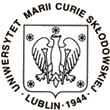

 |
 |
 |
|
Philippe Quentin
CENBG, Bordeaux Pairing correlations at high angular momenta: Collective aspects and the effect of particle number conservationP. Quentin[1,2], H. Lafchiev[1,3], D. Samsoen[1], I.N. Mikhailov[4,5] and J. Libert[6]
[1] CENBG, CNRS/IN2P3 and Bordeaux 1 U., Gradignan (France),
Pairing correlations are well known to lower the moments of inertia of nuclei from their rigid body estimates [1]. As a result the dynamical effect of pairing correlations at finite spins could be very well represented indeed by an intrinsic flow being both nondeforming and counter-rotating (with respect to the global rotation). This suggestion [2] has been confirmed by the study [3] of rotational bands in some representative deformed nuclear states. To achieve this, we have performed two sets of microscopic calculations under a routhian-type of constraint (namely including in the variational quantity a OMEGA.J term with usual notation). The first calculations have included pairing correlations a la Bogoliubov. The second ones were of a pure Hartree-Fock type (i.e. without any pairing correlations) upon imposing that the second type of solutions should have the same expectation value of the so-called Kelvin circulation operator K at a given value of the angular velocity OMEGA that those corresponding to the Hartree-Fock- Bogoliubov (HFB) calculations. One finds that both calculations yield strikingly similar rotational properties. Furthermore, we have been able [6] to deduce from the geometrical and pairing correlation properties of HFB solutions at zero-spin, the properties of rotational states in cases where one deals with a "good" rotational band behaviour, namely where the rotation does not couple significantly with other degrees of freedom like vibrations (no rotational stretching or anti- stretching) or single-particle excitations (no back-bending). We thus have been able to reproduce the results of HFB routhian calculations merely through constrained Hartree-Fock routhian calculations, once the HFB solution at zero spin only is known Finally a special attention has been paid to the region of the alleged phase transition region where the pairing correlations are weakened by the Mottelson-Valatin Coriolis anti pairing effect [7]. This has been achieved by implementing [8] in a routhian approach the HTDA method developed recently [9] which treat pairing correlations in an explicitly particle number conserving fashion. It has been shown in the particular cases of superdeformed states of nuclei like and near 192Hg that the evolution of the moments of inertia could be very well reproduced at spin values where an alleged normal to superfluid phase transition was alleged, in contrast with the current approaches using the Lipkin- Nogami approach [10] which is actually quite uncontrollable in such weak correlation regimes.
[1] Aa. Bohr and B. Mottelson, Det Kong. Danske Vid. Selsk.
Mat. Fys. Medd. 30 (1955) #1.
*** download abstract in doc file ***
| ||
Last modificated: 2003-09-22

